Research
 Tahei Tahara Chief Scientist |
If we can see what we could not see before, new science will emerge |
|---|---|
| With this thought in mind, we develop and apply the most advanced spectroscopic methods to study novel molecular phenomena and to elucidate the fundamental physical/chemical processes behind them. Through a deep understanding of the elementary processes of the molecular phenomena, we provide a firm basis and guiding principles for designing new materials and utilizing new properties and functions. |
Current research projects
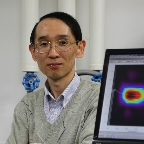 Satoshi Takeuchi Senior Research Scientist |
Observation and Control of the Excited State Dynamics of Condensed Phase Molecules by Advanced Spectroscopy Using Ultrashort Optical Pulses |
|---|---|
| Elucidating the dynamics of chemical reactions is essential to achieving a deep understanding of the processes involved. With this idea in mind, we study the dynamics of photoexcited molecules via a variety of time-resolved spectroscopic methods utilizing ultrashort laser pulses. We develop new spectroscopic methods based on state-of-the-art laser technology and aim to observe, understand, and control new fundamental phenomena of reactive molecules. Especially for ultrafast reactions, it is key to observe and "visualize" the continuous motion of nuclei (structural change) throughout the reaction. Therefore, we study the "instantaneous" structures of the reacting molecules by advanced multi-pulse experiments, and try to determine the structure of the transition state that plays crucial roles in chemical reactions. | |
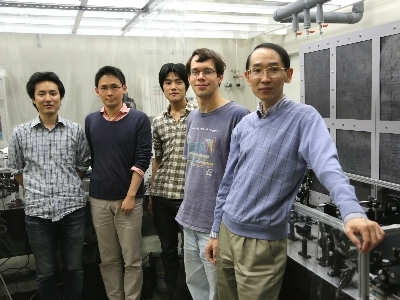 T. Fujisawa H. Kuramochi S. Takeuchi S. Tahara M. Sartin |
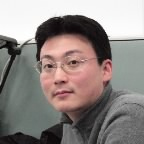 Satoshi Nihonyanagi Research Scientist |
Development of Novel Nonlinear Spectroscopy and its Application to Interfacial Science |
|---|---|
| The static and dynamic properties of molecules at interfaces have attracted many scientists' attention. It is known that interfaces have unique properties that cannot be found in bulk materials. However, little is understood about interfaces from a microscopic point of view. Even simple things, such as the structure and orientation of water molecules at the air/water interface were not clear 20 years ago. Even-order nonlinear spectroscopic methods are the most powerful and sophisticated methods for the investigation of molecular properties at interfaces. These methods are based on an even-order nonlinear susceptibility χ(2n) (n=1,2,…), which allows us to probe molecules specifically at interfaces. In our group, by developing new techniques for even-order nonlinear spectroscopy, we investigate the structures and dynamics of molecules at interfaces. Our studies are opening up a new field of interfacial science. | |
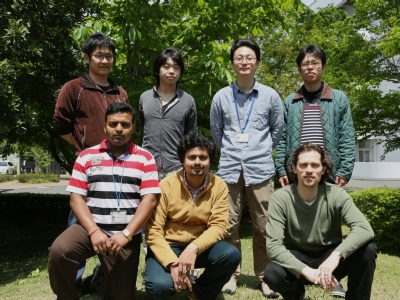 R. Kusaka S. Urashima S. Nihonyanagi K. Inoue A. Kundu A. Adhikari A. Myalitsin |
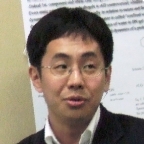 Kunihiko Ishii Senior Research Scientist |
Elucidation of Dynamical Processes in Functional, Complex (Bio-)molecular Systems and the Development of Relevant, New Spectroscopic Tools |
|---|---|
| We have recently launched a new project on another important class of molecular systems: complex molecules, including biomolecules, in which the hierarchical nature of the structure and interactions plays crucial roles in their properties and functions. Since such complexity is difficult to handle with conventional methods for small molecules, we are trying to develop novel spectroscopic tools applicable to complex molecules, aiming at a physical description of the characteristic processes in these molecules. | |
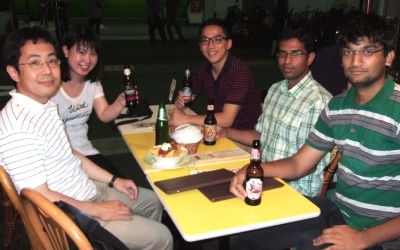 M. Sakaguchi H. Mizuno B. Sarkar K. Ishii R. Vaidya |
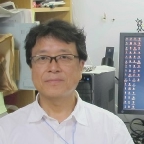 Masahisa Osawa Senior Research Scientist |
Development of Novel Luminescent Transition Metal Complexes |
|---|---|
| The metal complexes, hybrid compounds composed of metal ions and organic ligands exhibit new catalytic and optical functions. These functions depend largely on their intrinsic redox properties, which can be modulated by organic ligands. Luminescent compounds containing d10 coinage metal ions such as Cu(I), Ag(I), and Au(I) display unique photophysical properties because of their closed-shell characteristics. We develop new luminescent materials, while elucidating the emission mechanism by advanced spectroscopic methods. | |
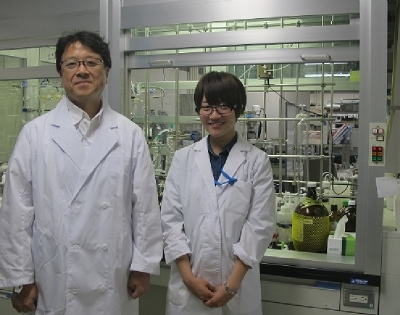 M. Osawa A. Kikuchi |
